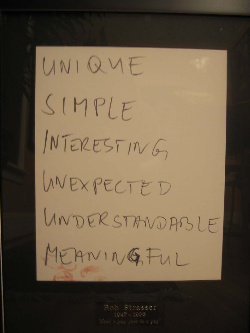This story in MarketWatch caught my eye: Buy stocks when men buy socks – Socks and underwear sales may be an economic bellwether.
Ok correlation does not imply causation. You learned that in school. I suggest that sales are going up because of deferred maintenance.
I should create the underwear index and base all my plans on the economic bellwether of men’s underwear sales.
OMG! Too late. Wow, and Alan Greenspan followed this index. There’s food for thought.
To look back on the efficacy of this idea, take a look at this article from the Washington Post written in 2009, it states:
“The growth in sales of men's underwear began to slow last year as the recession took hold, according to Mintel, another research firm. This year, Mintel expects sales to fall 2.3 percent, the first drop since the company started collecting data in 2003.
But the men's underwear index -- or, conveniently, MUI -- may also have a silver lining. Mintel predicts that next year, men's underwear sales will fall by 0.5 percent, and as with many economic indicators, a slowing of a decline can be welcomed as a step in the right direction. Retailers are reporting encouraging signs in the men's underwear department. Sears spokeswoman Amy Dimond said stores are beginning to see more sales. At Target, spokeswoman Jana O'Leary said sales of men's underwear have been stronger over the past two months and multi-pair packs are moving.”
That – was 2009. Four years ago. Multi-pair packs. Sears. Target. How are things going now?
Oddly (to me), this is the Men’s Underwear Index. Do women cherish their unmentionables more and are willing to put rent money into a new thong or two? If we included women’s underwear-buying-habits would that skew the data?
I don’t necessarily see this as an upturn. I’m not a pessimist, I’m being realistic. I live in Las Vegas. The turnaround here is s – l – o – w. A 12% up-tick in socks at American Apparel doesn't say anything to me about the economy. It’s conjecture. I place my bets on actually seeing people getting back to work.
In my enlightened opinion, it’s due to the fact that it is simply deferred maintenance – at some point you just have to buy new stuff.
That knock in the engine, the leak in the laundry room, the stomach ache that won’t go away. Or that mix of old and new – now redundant systems in your agency, that you haven’t realized, are too much work and producing very little data or efficiency. (See – I did get agency matters in there.)
No matter how well – or poorly – we’re doing, sometimes we just have to get a repair, fix a leak or go to the doctor, even if we don’t have insurance (yeah I know about Obamacare) – or search out a stellar system for getting your agency under control. (Did it again)
I think that the economy has been in a rut long enough; people have been un- or under-employed long enough that they just have to buy a new pair of socks.
Your agency is in a rut too, if you haven’t reviewed your processes, tools, and staffing (that includes a healthy review of ROLES) in a long time.
Keeping your head down and working is a good thing. But have you given any thought to the fact that all that mind-numbing stuff in-between – the forms, schedules, estimates, collaboration tools, email, spreadsheets, all that stuff – should be reviewed?
It’s 2013, Spring is here, time to face that deferred maintenance. Take a look in your sock drawer, organize and toss out the old, worn, and mis-matched.
If you can’t face the idea of throwing anything away, old socks, a bad process – call me. I’ll be happy to help.



